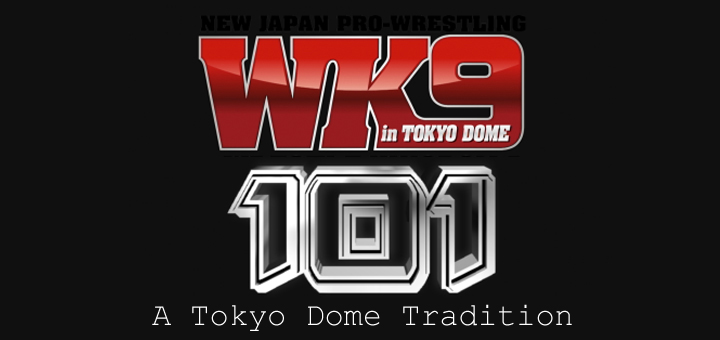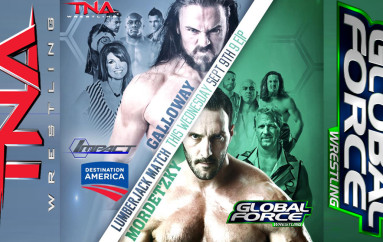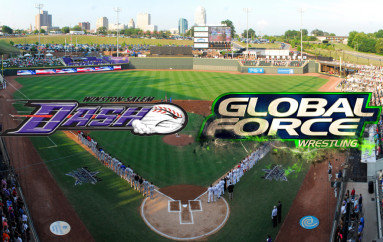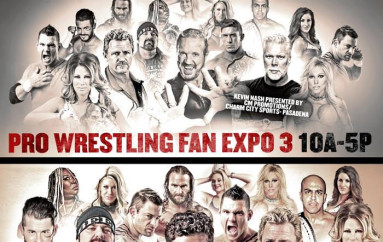WK9 101: A Tokyo Dome Tradition
By Steve Te Tai
Picture this: Tens of thousands of fans from all over the world packed into a stadium. It is the peak of the wrestling year, and you are watching an entertainment spectacle featuring a marathon of spectacular and memorable matches, cutting-edge TV production, mammoth stages with pyro and rockstar lighting, elaborate entrances with live bands playing the wrestlers’ theme music.
There are celebrities at ringside, and the legends of wrestling history appearing live in the ring, evoking memories from the past with the fans in attendance and the viewers at home. It is the biggest wrestling show in the world … and it all happens in Tokyo.
What’s that? You were thinking about another big wrestling show? Maybe it’s time you learned more about New Japan Pro Wrestling’s annual Jan. 4 show at the Tokyo Dome, which is in its 24th year and ninth under the title of “Wrestle Kingdom.”
This is the Super Bowl for professional wrestling, featuring stars from NJPW and guest wrestlers from around the world. And thanks to Global Force Wrestling, for the first time in its history this show will be broadcast live on PPV in North America on Jan. 4, 2015.
The Tokyo Dome was built as the preeminent entertainment venue for all of Japan, hosting the biggest acts in music such as the Rolling Stones, KISS and Taylor Swift, to major sports such as the NFL, NBA, MLB and historic fights from boxing and MMA.
But what the Dome has truly become known for is the annual wrestling show on Jan. 4. To put this in perspective, NJPW went head to head with a Mike Tyson fight at the peak of his power in 1990. Mike Tyson’s infamous upset loss to Buster Douglas was witnessed by more than 30,000 people in the Tokyo Dome. The previous night, more than 60,000 fans packed that same stadium to watch an NJPW card.
The 1990s were a glory period for Japanese wrestling, exemplified by a streak of record-breaking attendance and gates at the Tokyo Dome, as fans watched the legends of NJPW such as the Great Muta, Antonio Inoki and Hashimoto face off against the best wrestlers in the world, names such as Hulk Hogan, Ric Flair, Sting, Vader, the Steiners, Kurt Angle, Chris Jericho, and MMA fighters Don Frye, Josh Barnett, Takada and Lyoto Machida.
And in the wake of these legendary shows emerged a new era for the 21st century behind one of the most exciting and charismatic wrestlers in the world today, and the man who will headline this year’s Tokyo Dome — Hiroshi Tanahashi. In 2007, the foundation of this Tanahashi era was solidified by giving the Jan. 4 Dome show a permanent name — Wrestle Kingdom. And nothing combines the best wrestling with the ultimate spectacle quite like it.
This is where production innovation starts, and WK9 will see the production team push the limits of entertainment. The large stage, big screen and ramp setup that U.S. wrestling fans are so used to was done in the Tokyo Dome years before WWE and WCW presented their smaller versions.
You like elaborate ring entrances? Japan invented the over-the-top ring entrance. Past Tokyo Dome shows have seen fleets of motorcycles, 60-piece orchestras, rock bands, pole dancers, machine guns, wrestlers airbrushing their bodies to look like Marvel characters, smoking helmets, and, of course, no one can beat Okada’s entrance from last year where he carried a giant sword and was lead to the ring by a robot dinosaur. Just wait until you see what they have planned this year.
And even with the glitz of the colossal production and the glamour of the Japanese celebrity equivalents of Brad Pitt and Angelina Jolie at ringside, the heart of wrestling is never forgotten.
On Jan. 4, wrestlers from around the globe will descend on the Tokyo Dome in the most stacked and loaded wrestling show of the year. For a full four hours, prepare to have your mind blown, with creative matches and moves you’ve never seen. The wrestlers typically go all out for this night. And that’s what Wrestle Kingdom at the Tokyo Dome is really all about.
From the incredible sight of the Great Muta teaming with Sting to face the Steiners in 1992 to the day Muta passed the New Japan torch to Tanahashi in 2009, the debut of Jushin “Thunder” Liger, Brock Lesnar’s titanic encounter with Nakamura, the New Japan standoff against the UWFI outsiders (which Eric Bischoff said inspired the NWO), Hulk Hogan’s passionate farewell to Tokyo in 1994, and the emotional tribute Muta and Masahiro Chono gave to their fallen friend Shinya Hashimoto to close the first WK in 2007, and of course Tanahashi and Okada completely tearing the house down two years ago at WK7.
At Wrestle Kingdom 9, New Japan will continue the tradition. It promises more moments to remember. You don’t want to miss it, and thanks to Global Force Wrestling viewers in North America can watch it live. We’ll see you on Jan. 4.
Advertisement






